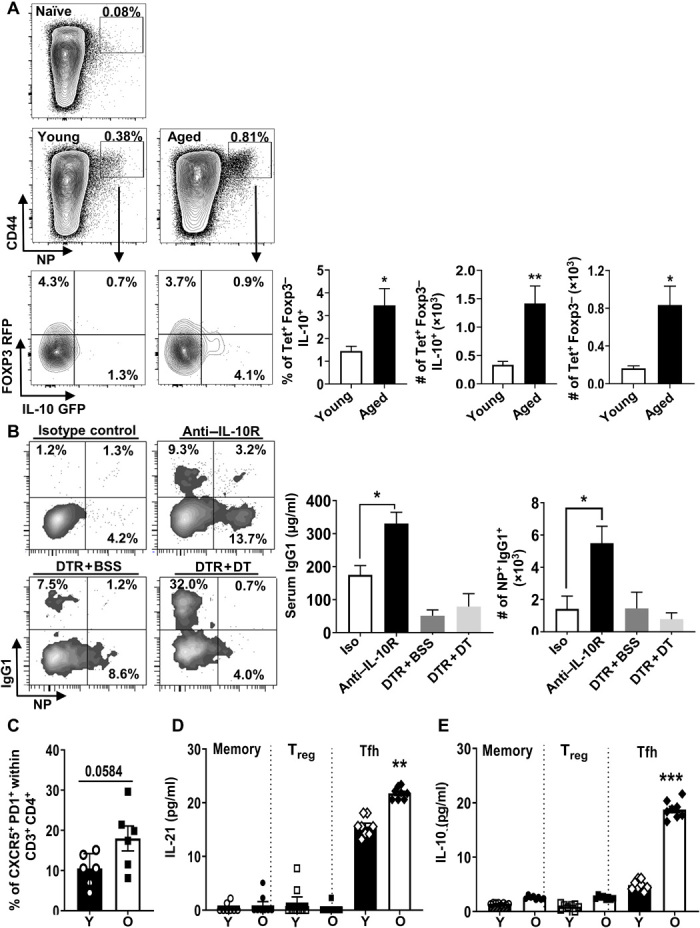Fig. 6. IL-10–producing Tfh cells emerge after vaccination, and IL-10, but neither Tregs nor Tfr cells, limits Tfh-dependent vaccine responses in aged mice.

(A) Plots show IAb-NP tetramer staining in immunized and unimmunized young (3.5 months, n = 5) and aged (18 months, n = 5) IL-10GFP–FOXP3RFP dual-reporter mice. Graphs show the frequency and number of NP-specific FoxP3−CD4+ T cells that are IL-10+ and the number of NP-specific FoxP3−IL-10+ T cells that are CXCR5+PD1+ (means ± SEM). (B) Aged (17 months, n ≥ 7) WT C57BL/6 (isotype or anti–IL-10) and (20 months, n = 5) FoxP3−DTR [phosphate-buffered saline (PBS)– or DT-treated] mice were immunized with nitrophenol-keyhole limpet hemocyanin (NP-KLH) in alum. Plots display the frequency of germinal center (GC) B cells (NP-specific) gated on Fas+GL7+. Graphs show the frequency and number of B cells that are IgG1+NP+ (means ± SEM) and serum levels of immunoglobulin (Ig) specific for NP (IgG1) (means ± SEM). Data are pooled from two independent experiments. (C to E) Tfh10 cells accumulate during aging in humans. Human spleen cells from young (Y) (median, 18.8; range, 18 to 26 years; three males and five females) and old (O) (median, 62; range, 60 to 67 years; four males and four females) individuals were analyzed by flow cytometry. (C) The frequencies of CD3+CD4+CD45RO+FoxP3− that are CXCR5+PD1+ (means ± SEM). (D and E) CD4+ T cells were bead-purified by negative selection; FACS-sorted memory CD4+ T cells (CD45RO+) into Tfh cells (CD25−CD127+PD1+CXCR5+), Tregs (CD25+CD127−PD1−CXCR5−), and other memory cells (CD25−CD127+PD1−CXCR5−) were either stimulated in vitro with anti-CD3/CD28 beads or unstimulated, and cytokines were analyzed by Luminex (means ± SEM). Each individual is represented by a symbol. *P ≤ 0.05, **P ≤ 0.01, and ***P ≤ 0.001, Student’s t test. BSS, balanced salt solution.
